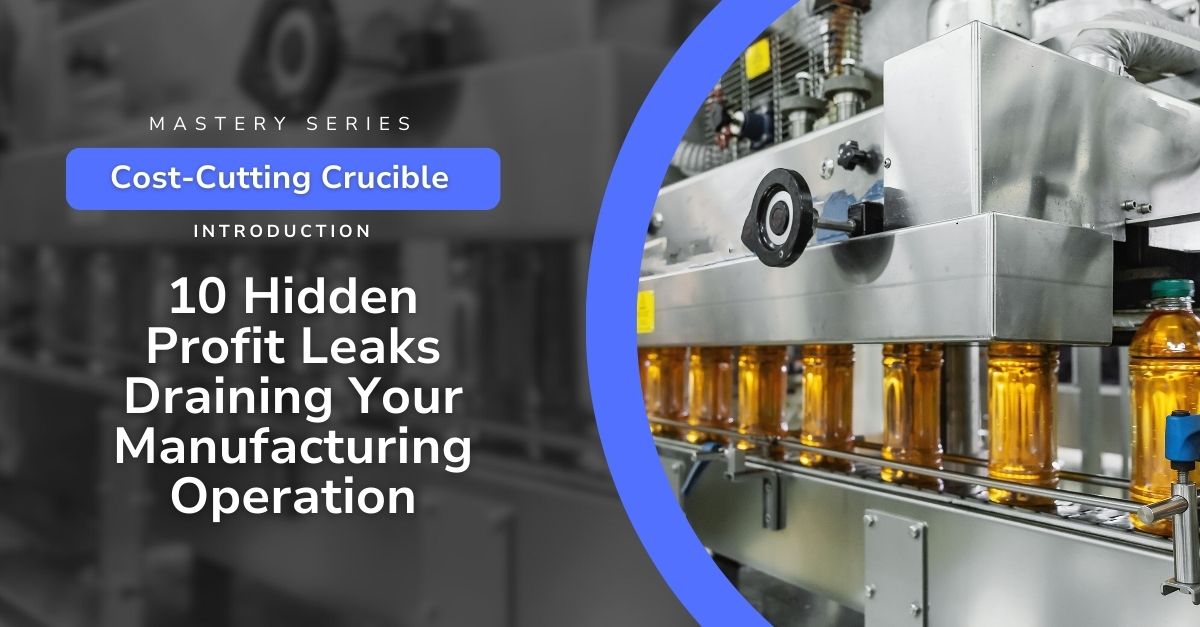
In manufacturing and other competitive industries, staying ahead of shifting customer preferences is more than a marketing concern, it is a critical driver of profitability, operational stability, and long-term survival.
Customer expectations evolve for many reasons. Competitor innovations can redefine value in your industry. Technological advances can alter how products are used, purchased, or delivered. Societal shifts can bring new priorities to the forefront, such as sustainability or ethical sourcing.
Understanding the Power of Customer Preferences
Your business wouldn’t exist without customers. The problems you solve, the experiences you provide, and the value you offer are all measured by their perception. These perceptions are a moving target, influenced by everything from competitor innovations to changing societal values and expectations. The consequences of inaction are profound: missed opportunities, obsolete inventory, and an increasingly uphill struggle to win and retain customers.
In this post, we’ll analyze the specific dangers posed by shifts in customer preferences, exposing the hidden ways they erode profit margins. More importantly, we’ll arm you with the strategies to mitigate risk, seize opportunities, and achieve profitability immune to fleeting trends.
1Unsellable Inventory:
When demand shifts unexpectedly, products that were reliable sellers can sit idle for months. In manufacturing, that often means capital is tied up in both materials and finished goods that cannot be moved without deep discounting. The longer inventory sits, the more it costs in storage, insurance, and handling.
What to do: Build agility into your supply chain and inventory planning. Use real-time demand signals from sales data, distributors, and even social trends to adjust production levels. Smaller batch runs, flexible manufacturing setups, or a made-to-order model can help prevent costly overstocks.
2Disrupted Marketing & Rising Customer Acquisition Costs:
A marketing strategy that worked last year can quickly lose its edge when customers shift where they get information or what messages they respond to. In manufacturing, that could mean fewer qualified inquiries from trade shows, outdated content in sales collateral, or declining engagement with digital campaigns.
What to do: Reassess marketing channels quarterly, not annually. Map where your buyers are gathering information now, whether that is new industry platforms, niche trade publications, or emerging digital channels. Update messaging to address today’s most pressing customer concerns, and track ROI closely to ensure acquisition spend is moving in the right direction.
3Sunk Development Costs:
It is costly to develop a product or service that fails to gain traction. When preferences change mid-project, entire R&D budgets can be lost before a single unit is sold. In industries with long lead times, like manufacturing, this risk is magnified.
What to do: Integrate customer validation into every development stage. Use rapid prototyping, focus groups, and pilot runs to confirm alignment before scaling. This early insight allows adjustments that save both time and money.
4Pricing Imbalance:
Even a strong product can struggle if pricing does not match evolving customer perceptions of value. Set prices too low and you leave money on the table. Set them too high and you risk losing volume to competitors.
What to do: Continuously monitor pricing in your sector, not just for direct competitors but for substitutes and alternatives. Pair market analysis with direct customer feedback to understand where value perception is shifting. Adjust prices incrementally to maintain competitiveness without eroding margins.
5Need for Increased Operational Expenses:
Higher expectations for convenience, speed, and customization can require upgrades in manufacturing capacity, logistics, and customer service infrastructure. Without efficiency improvements, these investments can erode profitability.
What to do: Before committing to major operational changes, assess potential returns. Consider process automation, strategic outsourcing, and workflow redesigns that meet expectations while controlling cost increases.
6Reduced Brand Loyalty:
Shifts in what customers value, whether it is sustainability, innovation, or ease of doing business, can loosen even long-standing customer relationships. In manufacturing, this may mean large accounts slowly moving orders to other suppliers without warning.
What to do: Actively maintain relationships through consistent quality, personalized communication, and value-added services. Use CRM systems to identify when order frequency or engagement changes, so you can act before a customer is lost.
7Missed Upsell/Cross-sell Opportunities:
When add-on products or complementary services no longer match current priorities, average transaction value drops. This can be subtle at first but add up to significant revenue loss over time.
What to do: Regularly review buying patterns to identify new natural pairings. Train sales teams to adapt their upsell recommendations based on updated market and account insights.
8Reputation Damage:
Preferences are often tied to values. If your company’s stance on environmental impact, sourcing, or diversity is out of step with the market, the result can be both lost customers and public criticism.
What to do: Conduct a values alignment review. Identify areas where your operations already meet or exceed expectations and communicate them clearly to the market. Where gaps exist, plan visible improvements and share progress.
9Employee Morale Decline:
Misalignment with customers can lead to declining sales, frequent changes in direction, and increased pressure on frontline teams. Over time, this drains motivation and accelerates turnover, making it harder to provide the service needed to rebuild customer trust.
What to do: Involve employees in identifying market changes and developing solutions. Provide training on new customer expectations, recognize adaptability, and keep communication open so teams understand both the challenges and the plan forward.
10Missed Innovation Opportunities:
Over-focusing on current customer needs can cause you to miss shifts that create entirely new market segments. Competitors willing to experiment may capture these opportunities first.
What to do: Dedicate resources to scanning adjacent industries, emerging technologies, and long-term societal trends. Encourage employees across departments to contribute innovation ideas and create a structured process for evaluating and acting on them.
Future-Proofing Your Profit: Adapting to Preferences
Navigating an increasingly complex and competitive market demands constant vigilance, a deep understanding of customer preferences, and an adaptable business model. The ramifications of failing to respond to these changing preferences are not just immediate losses; they undermine your competitive position in the long run. By understanding how profitability is susceptible, as outlined in this post, and proactively enacting mitigating strategies, you strengthen your defense and ability to capitalize on opportunities.
It’s essential to recognize that these issues don’t exist in isolation. Fluctuations in customer preferences influence product development, pricing, marketing, and overall operational efficiency.
A company that addresses these interconnected risks builds true resilience, setting itself apart from competitors left reacting to changing tides. This proactive approach allows businesses to weather unpredictable shifts, achieve sustainable growth, and establish long-term industry leadership.
The POWERS team remains committed to helping your business navigate these competitive currents. Feel free to contact us for personalized insights and customized action plans!
Working with POWERS
The management consultants at POWERS work directly with manufacturing leaders to pinpoint where changing customer preferences are silently impacting margins and to design strategies that protect profitability. We combine industry experience with data-driven insights from our DPS productivity platform, giving you real-time visibility into how market shifts are affecting your operations.
Our approach blends strategic advising with interactive workshops for leadership teams. These sessions focus on embedding customer intelligence into product planning, refining pricing strategies, and adapting service models to meet evolving expectations. With DPS, your team can track the right metrics, respond faster to market changes, and maintain a competitive edge.
Keep changing preferences from leading to operational setbacks. Contact POWERS today for a personalized assessment of your manufacturing processes. We’ll identify where agility and innovation can improve efficiency and maximize profitability in a shifting market. Reach us at +1 678-971-4711 or info@thepowerscompany.com.
Continue Reading from this Mastery Series
- Part 1 - How Runaway Costs Derail Manufacturers’ Drive for Sustainability
- Part 2 - Tackling Excessive Waste Management Issues in Manufacturing
- Part 3 - Mastering Resource Efficiency in the Quest for Manufacturing Excellence
- Part 4 - The Impact of Unmitigated High Energy Costs on Manufacturers
- Part 5 - How the Complexities of Regulatory Compliance Can Erode Margins
- Part 6 - Navigating the Challenges of Reduced Market Competitiveness for Sustained Profitability
- Part 7 - Don’t Let Preferences Pull You Under
- Part 8 - Low Talent Investment is Undermining Your Bottom Line
- Part 9 - Don’t Let Supply Chain Vulnerabilities Bleed Your Profits
- Part 10 - Outsmart the Competition and Protect Your Profits







